- 3 years ago
-
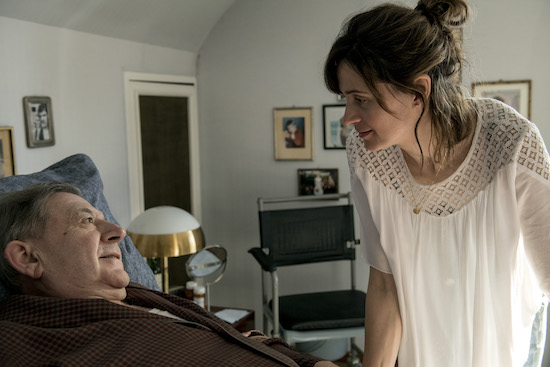
Aliocha Merker/Zodiac Pictures Ltd. Written and directed by Bettina Oberli, My Wonderful Wanda is a largely entertaining film about a wealthy Swiss family and its patriarch’s Polish caretaker. Although it starts off like a typical satire of class/culture divide, complete with victim and victimizers, the film soon becomes something else — a more complicated push and pull of family dynamics among two families. Though it may get overly complicated in the last half, My Wonderful Wanda’s twists and turns, as well as its strong performances, keep it watchable and emotionally engaging.
The film opens with Wanda (a sad-eyed Agnieszka Grochowska) arriving back in Switzerland after some time away from the prominent Wegmeister-Gloor family, whose patriarch, Josef (André Jung), is recuperating from a stroke. She is clearly a welcome presence in their spacious, lakeside house, judging from the reception she receives from son Gregi (Jacob Matschenz), matriarch Elsa (the elegant Marthe Keller), and especially Josef himself, who is delighted and relieved to see her. Though clearly an employee (who sleeps in a bare basement room), Wanda is no pushover, as we see her haggle successfully with Elsa over pay for taking on extra work in the kitchen. Still, all seems pretty typical until Josef calls out for her in the middle of the night. After he hands her cash, they proceed to have sex in a practiced, mechanical (at least for her) fashion that suggests this is far from the first time. As they go at it, she looks at—and we see—wall photos of Josef and Elsa as a beautiful young couple. It all seems rather sad, especially as we learn that Elsa is still in love with her husband and Wanda has two young children back in Poland, for whom she is earning the money. Thus the film’s plot begins to unspool.
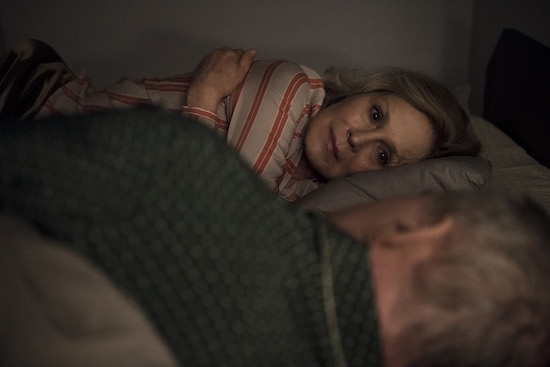
Aliocha Merker/Zodiac Pictures Ltd. Things become more strained when Elsa and Josef’s daughter Sophie (a spiky Birgit Minichmayr) arrives for Josef’s birthday party with her husband Manfred (Anatole Taubman). Sophie is condescending to Wanda and dismissive of her father’s dependence on “The Pole” as well as her brother’s affection for her. There’s clearly no love lost between the siblings and they argue bitterly. Things come to a head when Sophie accuses Wanda of stealing, and the latter returns to Poland.
Part II of the film begins with Wanda returning yet again to Switzerland, stopping to vomit on the way to the Wegmeister-Gloor home. This can only mean one thing in a family drama. It’s an interesting set-up for the rest of the plot, which gets even more byzantine, with family members pitted against or supporting each other in different alliances and the arrival on the scene of Wanda’s family. Amid the dysfunction and changing alignments, the film throws in more obstacles before the action settles down somewhat.
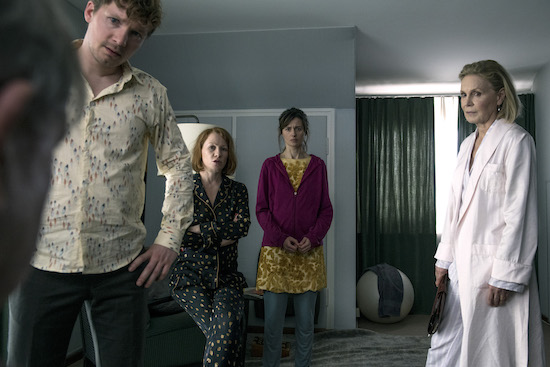
Aliocha Merker/Zodiac Pictures Ltd. My Wonderful Wanda mirrors the situation in many families: people don’t always make sense and often needlessly complicate matters. Oberli presents an enjoyable take on the needs and desires of individuals who are not as good or evil as they might initially seem, but are basically all struggling to be happy. What starts out looking like a simple critique of haves and have-nots turns out to be way more like actual life.
My Wonderful Wanda opens in theaters and virtual cinemas at BAM in New York, at Laemmle Theaters in Los Angeles, and elsewhere on Friday, April 23.
—Marina Zogbi
Latest News
- 3 years ago
-
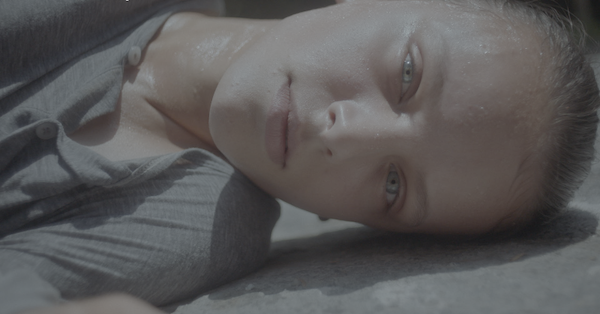
Busca Vida Filmes Êxtase (Ecstasy), a beautiful, unsettling pseudo-documentary from Brazilian filmmaker Moara Passoni, is the semi-autobiographical story of a young woman with anorexia, set in the tumultuous political climate of 1990s Brazil. Eating disorders are often a young person’s extreme method of exerting control over her life, and young protagonist Clara is no exception. She traces the origins of her sensitive psyche to a photo of her activist mother standing up to police during a protest, her pregnant body flooded with adrenaline. As Clara notes when her mother is elected to Congress at a time when politicians were often physically attacked, “As long as I kept an eye on my mom, nothing would happen to her.” The wary girl finds not only control, but ecstasy through starvation.
The film’s narrative is just part of the experience of Êxtase, an inventive, impressionistic work that casts its strange spell using photo stills, old news footage, beautifully framed reenactments, and sound designer Cécile Chagnaud’s dramatic, disquieting soundtrack. The latter, which includes Ismael Pinkler’s original score and a collaboration by David Lynch and Lykke Li, is full of classical music snippets, animal sounds, strange mechanical noises and a lot of whispering. Scenes are narrated by Clara as both child and adolescent.
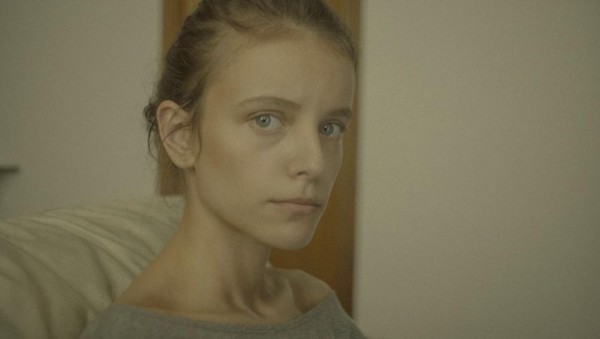
Busca Vida Filmes She describes her family’s move to the country’s federal capital, Brasilia, its sleek, modern architecture adding to her culture shock. There are several close-ups of her classmates (often whispering conspiratorially) at a Catholic school, where Clara is transferred to another class after kissing a girl. She’s enrolled in ballet class, where sun-drenched scenes of legs and feet uniformly stretching and pointing suggest a kind of aspirational purity. Clara soon finds a religious fervor in abstinence from eating, categorizing food very specifically in a “secret” notebook. She becomes emaciated and begins to hallucinate; during a class visit to an anatomy museum, she imagines her body as “a cage of bones keeping my heart inside me.”
Her collection of photos of horrifically skeletal young women is juxtaposed with images of actual skeletons and death. Doctors warn her that she will die if she doesn’t eat, but she continues to pursue “a light absolute state,” at one point surgically paring down a piece of birthday cake for 40 minutes until it is weightless enough to put into her body. As we see in the film’s rather uplifting conclusion, she eventually comes to a decision about the direction of her life.
Êxtase is available through MoMA’s Virtual Cinema from March 28 through April 2.
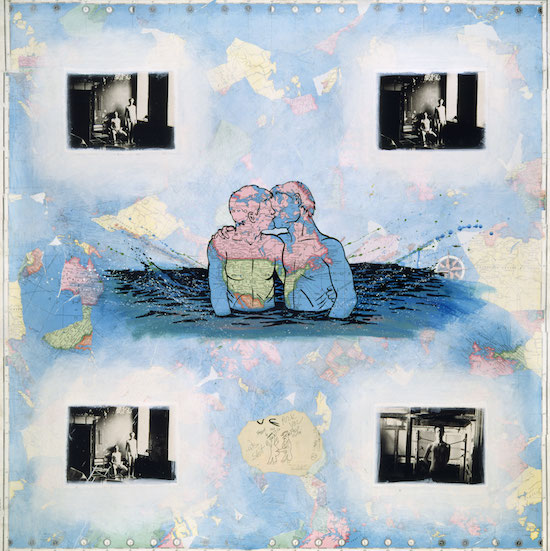
Estate of David Wojnarowicz. Courtesy of the Estate and P.P.O.W GalleryCurrently available to stream through Kino Marquee virtual cinemas is Chris McKim’s immersive portrait of pioneering queer artist David Wojnarowicz, Wojnarowicz: F**k You F*ggot F**ker (the title of one of his best-known works). Using the artist’s own written and audio journals, along with interviews, still photos and video footage, McKim not only shows us Wojnarowicz’s short, turbulent life and groundbreaking work, but captures the sights, sounds and energy of the 1980s art scene in New York, along with the accompanying horror of the emerging AIDS epidemic.
After a traumatic childhood with an abusive, alcoholic father, Wojnarowicz moved to Hell’s Kitchen with his mother at age 11. This rough start fueled him with a restless anger that would shape his life and his work. A major life-changing event was meeting photographer Peter Hujar, who became a close friend and working partner.
Interview clips with leading lights of the day including filmmaker Richard Kern, art critic Carlo McCormick, writer/humorist Fran Lebowitz, and art dealer/gallerist Gracie Mansion add great detail about Wojnarowicz and the downtown art/music scene. As if he knew his days were numbered, the astoundingly prolific artist was constantly creating, commenting on life and the world, whether it be through music, essays, stencil graffiti, or emotionally charged paintings and photographs that harnessed the anger and outrage of the Reagan years.
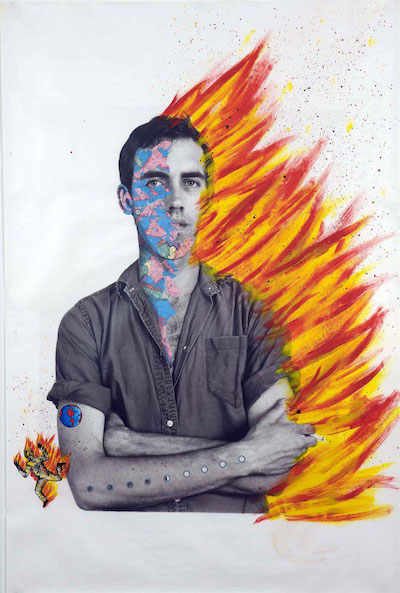
Estate of David Wojnarowicz. Courtesy of the Estate and P.P.O.W Gallery Though his artworks were first shown at East Village pop-up galleries, Wojnarowicz was eventually embraced by the art world establishment he disdained, landing two pieces in the 1985 Whitney Biennial and creating an installation for collectors Robert and Elaine Mnuchin (parents of Steve).
Hujar was the first in his group to contract AIDS, and Wojnarowicz soon followed. Through video footage, McKim reminds us of the various protests and demonstrations that accompanied the deaths of so many, as ACT Up and other AIDS-battling groups demanded healthcare and funding. Attacked by politicians and other figures for his art’s blasphemy and obscenity, Wojnarowicz kept raging and working until succumbing to the virus at age 37. The chaotic energy of his life and times is made palpable through a film that is both celebratory and haunting.
Watch Wojnarowicz: F**k You F*ggot F**ker through Kino Marquee Virtual Cinema.
— Marina Zogbi
- 3 years ago
-
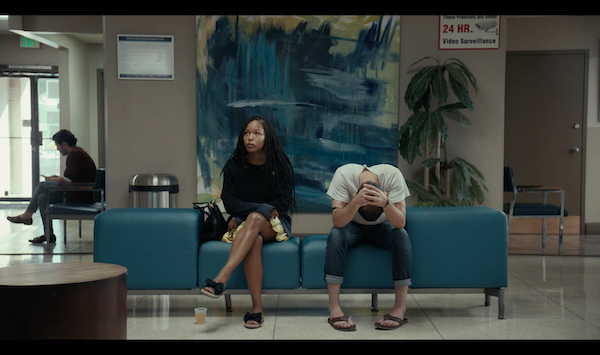
Kino Lorber Test Pattern, the debut feature from filmmaker Shatara Michelle Ford, is a tense, intense film that grabs one’s attention from the start and doesn’t let go for its entire 82-minute duration. That’s quite a feat during these distracting times. I honestly can’t remember the last time I watched a film at home and did not pause it at some point for a snack or some other mental or physical interruption, but I was too caught up in Test Pattern to stop it. A well-crafted, nicely paced movie that weaves in a variety of current themes—racial and sexual dynamics, flawed healthcare, #MeToo—yet is never obvious or predictable, the film is impressive on many levels.
From the introductory scene—what looks and feels like a non-consensual sexual encounter—a creeping unease sets in. (This will undoubtedly be more severe for anyone who’s experienced such an encounter.) We then watch the development of a relationship between the film’s black protagonist, Renesha (a wonderful Brittany S. Hall) and Evan (Will Brill, also excellent), a white tattoo artist who seems completely smitten with her. Despite her corporate background and his looser lifestyle, they clearly click and he seems to be a supportive boyfriend, cooking breakfast and encouraging her on the morning of the first day at a new job. Their conversations, especially as they get to know each other, have a raw, unpolished realness.
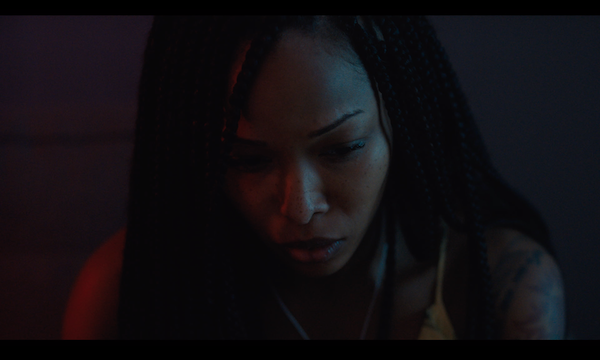
Kino Lorber After work, Renesha’s friend Amber (Gail Bean) talks her into going out for drinks at a club where their discussion includes timely references to Trump and Renesha’s new, very white workplace. (Perhaps not so incidentally, the movie takes place in Texas.) Soon, two white guys at the club hit on them and though Renesha is reluctant (and the viewer is inwardly screaming “Please just go home!”), both the men and Amber talk her into another drink and a cannabis gummy. Renesha proceeds to get way too high and Ford does a great job conveying the character’s disorientation amid the garish colors of the club. Passing in and out of consciousness, she winds up leaving with one of the club guys.
When she finally gets home to a worried Evan, admitting that she doesn’t quite remember what happened, he’s sympathetic and insists that she go to a hospital. Thus begins the frustrating search for a rape kit and/or someone qualified to administer it. As the couple drive from one health center to another, Evan becomes more agitated and Renesha more withdrawn. We begin to wonder—as does she—why he is pushing so hard for her to report the crime. Our sympathies may switch back and forth between the two main characters as the dynamic in their relationship shifts and their bond becomes strained. At one point Evan asks Renesha if she’ll be OK. “I don’t know,” is her honest reply.
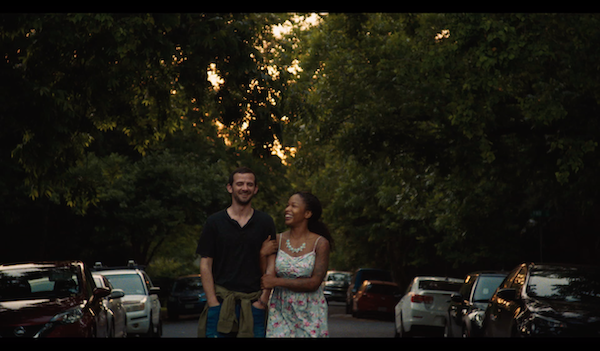
Kino Lorber There are no easy explanations or simple characters in this film, only authentically awkward emotions and conversations, along with an apprehensiveness that never lets up. Though the film’s open-ended conclusion might not be satisfying (especially after that build-up), Ford has made a compelling movie with two terrific leads and a lot going on, much of it commendably subtle. Test Pattern is a challenging film, not meant to comfort or supply answers to the issues it touches upon. Like real life, it depicts the messy humanity we all grapple with, though some of us have more of a struggle than others.
Test Pattern opens in virtual cinemas on Friday, February 19.
—Marina Zogbi
- 3 years ago
-

Photo: Radu Ciorniciuc Acasă, My Home, Radu Ciorniciuc’s debut feature documentary, is an incredibly intimate look at a family living (literally) on the fringes of Romanian society. Maybe his background as an investigative reporter enabled Ciorniciuc to become so deeply embedded in the daily lives of the Enache family — father Gică, mother Niculina and their nine children – who inhabit, and eventually leave, an abandoned water reservoir outside Bucharest. The resulting film is a sometimes troubling, always fascinating, portrait of a close, impoverished family forced to become part of a civilization they rejected two decades ago, for better and for worse.
From the start, the camera is right in the midst of the Enache kids, several of whom are paddling on a lake as older son Vali catches fish bare-handed. They’re a lively, rough-and-tumble bunch who may be acting out a little for the camera, but generally seem pretty happy. We’re then introduced to their shack-like home and compound, where pigeons, dogs, kittens, chickens and pigs roam around and eat together in peaceful, if messy, co-existence.
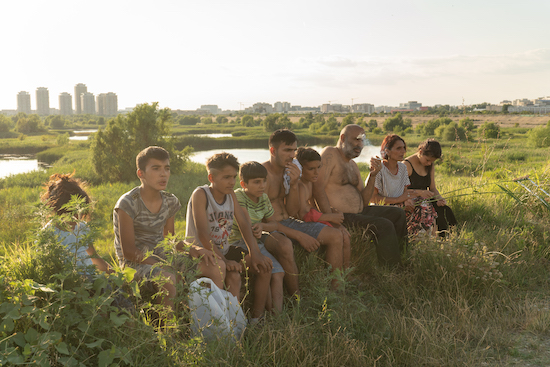
Photo: Mircea Topoleanu The first sign of trouble comes with a call to Gică’s cell phone (the only electronic device in sight) from someone giving him a heads-up about the imminent arrival of Social Services. The kids immediately run into the wilderness to hide, clearly something they’ve done before, as Niculina threatens to kill the authorities in various colorful ways if they take her children away.
One of the more fascinating aspects of the film is how close the Enaches are to downtown Bucharest, as shown by several aerial views. Highrise buildings are clearly visible in many shots of the family going about their rustic business. We find out that their “wilderness” will soon become a nature park (the largest in the EU), when the prime minister and his wife show up with a camera crew and several reporters. The Enaches are apparently well-known to the locals, especially the charismatic Gică, who — with his knowledge of the local plants and wildlife — has served as a nature guide to the area. Eventually, however, they must leave.

Photo: Mircea Topoleanu The authorities, especially a female social worker who registers the kids for school and find the family an apartment, clearly want to help, but the Enaches’ transition to civilized life in the city does not go smoothly. The kids attend school for the first time and are woefully behind in basics like reading and counting. Used to running wild and fishing without any kind of permit, they soon get into trouble, which infuriates Gică. He and Niculina, both in poor health, fight about handling the kids and whether to stay in the city as the squalor of their new home gets the family kicked out of the building. Though Vali, who acquires a girlfriend and works with the nature park crew, seems to be adjusting pretty well, he has to deal with his own difficulties, including a fraught relationship with his controlling father. In one poignant scene, young Rică—previously shown as a joyful and charming boy—tearfully expresses how much he misses his former life: “The city isn’t good for us at all. Like a prison.”
The film doesn’t present any easy answers or sides, showing the harsh reality of the family’s situation despite the good intentions of those trying to help them. It would be interesting to find out what has become of the Enaches since the film was shot (and perhaps we will). One can only hope for the best, despite what look like very tough odds.
Acasă, My Home opens in select theaters and virtual cinemas on Friday, January 15.
—Marina Zogbi
- 3 years ago
-
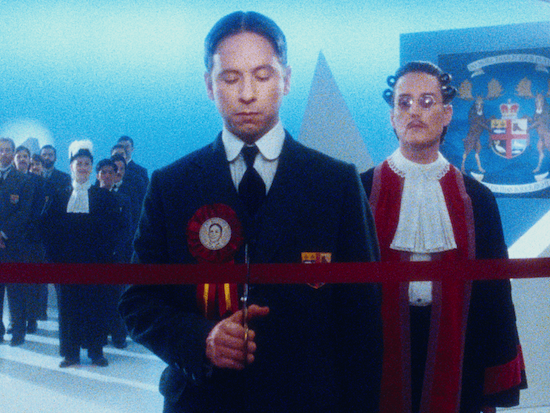
Oscilloscope Laboratories It’s a common belief that people look for fantasy entertainment during stressful, depressing times, but Matthew Rankin’s deeply surreal film The Twentieth Century would probably be satisfying to watch at any time. Well, satisfying to anyone who can appreciate an absurd, hilarious, heavily stylized “bio-pic” based on the century-year-old diaries of a Canadian prime minister.
As most Americans probably don’t know, William Lyon McKenzie King served as Canada’s PM for three non-consecutive terms in the 1920s and 30s, and is known for being a solid, if dull, statesman. For his audacious debut feature, Rankin created a film very loosely based on King’s private journal musings. Many critics have compared the result to the dark, fantastical work of fellow Winnipeg native Guy Maddin and to Monty Python, which makes sense. I’d add that The Twentieth Century is a little like a visually stunning episode of Drunk History, if the narrators dropped acid instead of drinking alcohol and Wes Anderson (also on acid) were the cinematographer. It’s full of references to historical Canadian figures and events, which invite multiple visits to Wikipedia. Or not, if viewers just want to let the film wash over them in hallucinatory waves. It obvious to anyone, though, that Rankin repeatedly pokes at Canadian traits and identity throughout the film, often its funniest bits.
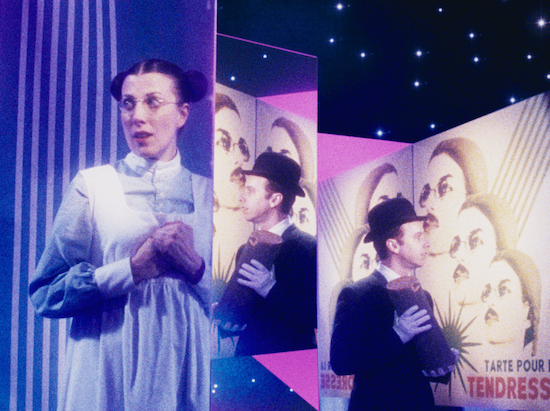
Oscilloscope Laboratories The action begins in Toronto in 1899, as young candidate King (Dan Beirne, all in with this role) campaigns at the Hospital for Defective Children. (King didn’t actually run for PM until 1921, but that’s the least of the film’s liberties.) His father (Richard Jutras), in debt because he has financed his son’s campaign, has been abandoned by his wife, King’s ailing, overbearing mother (Louis Negin, in one of the film’s several cross-gender roles). The young man falls for the beautiful, unattainable woman of his mother’s (literal) dreams, though it’s the latter’s long-suffering nurse (Sarianne Cormier) who is clearly smitten with him.
A persnickety, upstanding sort — except for a shameful fetish – King is clearly a man under pressure.
Under the supervision of a John Cleese-like Justice Anderson (Trevor Anderson), King takes part in Tests of Leadership, along with the other candidates. They compete in ribbon-cutting, leg-wrestling, (the wonderfully Canadian) waiting your turn, tree identification and baby seal clubbing, among other skills. The last event gets pretty bloody, as do a few other scenes, contributing to The Twentieth Century’s dark tinge.

Oscilloscope Laboratories The film is divided into chapters, as King travels to different cities including Vancouver, where a sadistic doctor subjects him to A Clockwork Orange-type conditioning to overcome his fetish. He’s also fitted with an apparatus that sounds an alarm when it “detects the slightest disturbance in his loins.” (Needless to say, this will result in humiliation.) There’s also a tense situation in Quebec to contend with, along with the Boer War and the country’s split between its supporters and detractors. None of this stops King from pursuing his ambition to steer Canada through the upheavals of the new century.
Naughty jokes and homoerotic references are sprinkled throughout the film, along with many mentions of maple-walnut ice cream. Stark animation, minimalistic sets and portentous signs give the film its specific look, reminiscent of German Expressionism and Russian propaganda films. The result is a unique, whimsical take on a historical figure and Canadian culture that’s ultimately all just a sh*t tonne of fun.
The Twentieth Century is available on streaming platforms on Friday, December 11.
—Marina Zogbi
